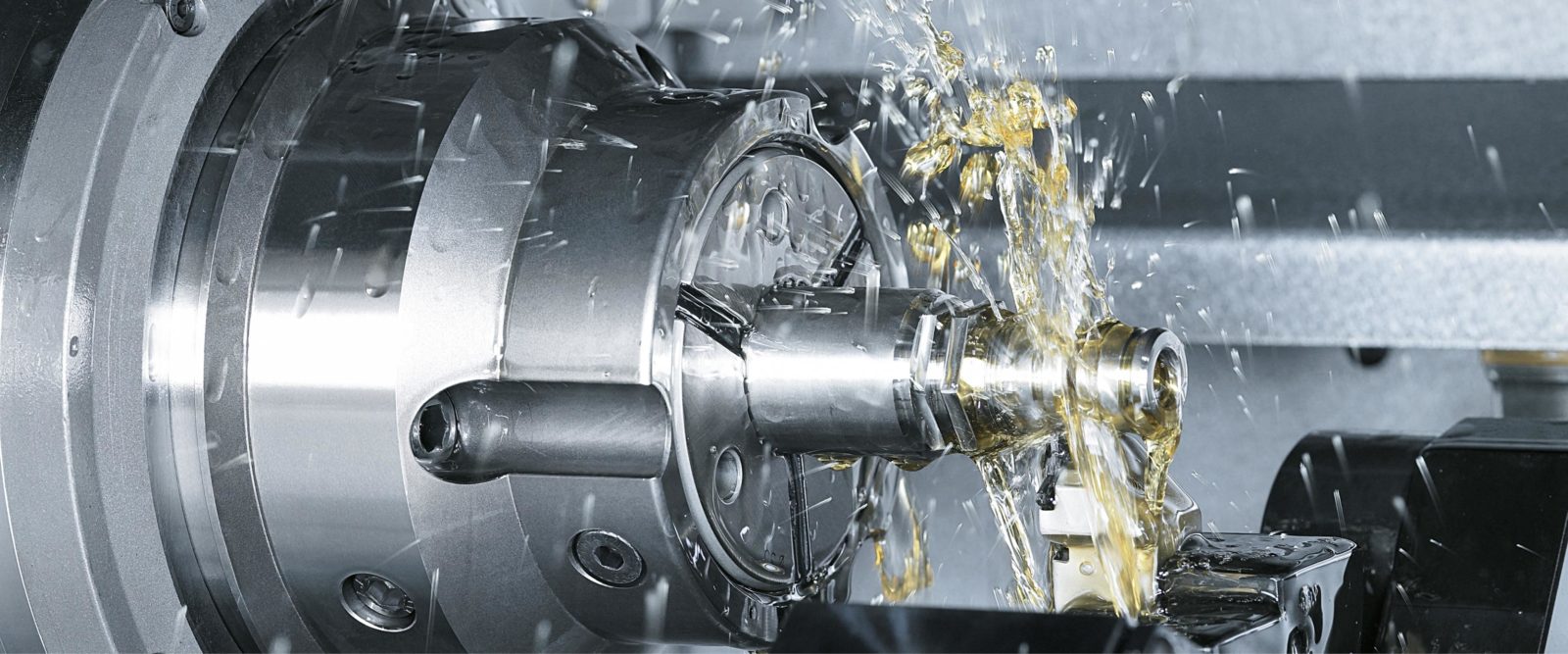The complete guide to 4-axis turning
Turning is a machining operation that is applied to create cylindrical parts or components, shape them to the correct dimensions and add features such as threads or grooves. It involves rotating a workpiece at high speed in a chuck which is connected to a lathe, then bringing a tool into contact with the surface to shape it. The pressure applied by the tool on the surface determines the depth of material cutting.
Explore our range of turning machines
Turning was traditionally done by hand, but nowadays it is mostly carried out by Computer Numerical Controlled (CNC) machines or lathes which include 4-axis turning machines. CNC machines produce parts that are cut precisely to match the design by entering a code that controls the tool path, the speed of the spindle and depth of cut.
CNC machines can also be integrated with Computer Assisted Manufacturing (CAM) software to automatically translate 3D designs into CNC readable codes.
Most original CNC turning machines were 2- or 3-axis machines. This means they could only move in 2 or 3 planes. More modern machines have 4 axes.
What is 4-axis turning?
The best place to start is to define what each axis relates to in 4-axis turning.
The 4 axes used in 4-axis turning are as follows:
- X-axis – This refers to the movement perpendicular to the axis of the stock, this is the normal lathe cutting axis.
- Z-axis – This refers to movement along the axis of the stock, it is used when holes are drilled into the centre of the stock, and is also one of the traditional lathe axes.
- C-axis – This refers to movement around the axis of the stock. This axis is the same axis as the spindle, however during milling operations the main spindle drive is typically disengaged and a servo drives the C-axis to allow for accurate positioning. A C-axis allows for slots to be cut into the part and holes to be drilled in the x-axis plane.
- Y-axis – This refers to movement perpendicular to the axis of the stock with a live tool or separate milling head, and works in conjunction with the C-axis to mill slots, flat features and drill holes off centre to the x and z axes.
4-axis turning is especially useful for machining complex parts such as gears. In the case of a gear, the Z-axis acts as an indexing axis, moving each tooth into position then stopping, allowing the C-axis rotating cutter to pass over until the tooth is complete. Then the gear is indexed into the right position for the next tooth to be cut, and so on.
Some 4-axis CNC turning machines are fitted with turrets at both ends of the spindle, allowing machining of both ends of a workpiece at the same time. This is especially useful when machining long items such as axle shafts for automotive purposes.
Benefits of 4-axis turning
Versatility of cutting
4-axis turning machines allow cuts to be made on every surface of the workpiece. In other words, it’s possible to cut slots, grooves or designs on the front, back, top, bottom and each side of a part.
Increased speed and efficiency
The fact that a 4-axis CNC machine can act as both a turning centre and mill, cuts down on the amount of machinery needed. You no longer need to cut the cylindrical shape in a turning centre, then transfer it to a mill to finish the design. Everything can be done in one place, either as continuous or indexed machining. This reduces production time, saves money and decreases waste.
Complex design capability
When a 4-axis turning machine is combined with powerful CAM software, intricate designs can be machined quickly and accurately. This is useful for custom machining and rapid prototyping. High-performance 4-axis machines can cut designs to a tolerance of +/- 0.01mm, depending on the part and material.
Wide range of industries
4-axis turning machines can provide parts for any industrial use including oil and gas, aerospace, automotive, construction, medical instruments, etc.
Applications of 4-axis turning
The following parts, for the specified industries, are commonly manufactured using 4-axis CNC machines.
Energy (wind, oil, gas)
- Valves
- Rings and sleeves
Automotive
- Transmission parts
- Camshafts
- Clutches
- Steering components
- Gears
Aerospace
- Engine components
- Structural components and fittings
- Landing gear parts
- Couplings
In conclusion
4-axis turning is far more versatile than standard 2-axis or 3-axis machining. 4-axis machines allow:
- More complex parts to be easily manufactured
- Faster production times and increased efficiency
- Manufacturers to cut down on the amount of machinery needed
Kingsbury offers a wide range of CNC lathes and turning centres, including 3-axis, 4-axis, 5-axis and even 6-axis machines. The machines available are all made by industry-leading brands including Hermle and INDEX Traub.
